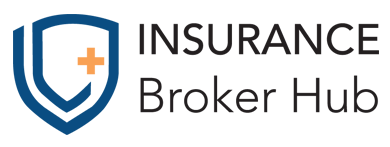Between 2016 and 2020, a staggering 26.6 percent of health insurance claims in the United States faced denials primarily due to registration and/or eligibility issues. Additionally, over 17 percent of claims were denied during this period due to missing or invalid claim data.
These statistics showcases the critical importance of comprehending the details of health insurance, as improper registration and data inaccuracies emerged as leading culprits in denying access to healthcare services in 2020.
In the dynamic landscape of health insurance, where nuances can shape your healthcare journey, understanding and optimizing your benefits are paramount. This comprehensive guide provides invaluable tips, whether you’re a seasoned policyholder or navigating health insurance for the first time.
From understanding policy details to leveraging financial tools, these strategies are designed to help you make informed decisions, save money, and maximize your healthcare coverage.
Tip 1: Know Your Coverage
Understanding the nuances of your health insurance policy is the cornerstone of effective healthcare management. Take the time to look into your policy documents, identifying covered services, limitations, and exclusions.
A clear grasp of terms like deductibles, copayments, and coinsurance will help you make informed decisions and avoid unexpected out-of-pocket expenses.
For instance, consider the case of a policyholder who, unaware of coverage limitations, undergoes a medical procedure only to find out later that it’s not covered by their insurance, resulting in unexpected expenses.
Tip 2: In-Network Providers
Choosing healthcare providers within your insurance network can substantially impact your healthcare costs. In-network providers have negotiated rates with your insurance company, translating to lower out-of-pocket expenses for you.
Research and identify in-network providers through your insurance company’s website or customer service, ensuring you maximize the benefits offered by your health insurance plan. Let’s consider a scenario where a policyholder selects an out-of-network specialist for a consultation.
The subsequent higher out-of-pocket costs could have been avoided by choosing an in-network provider.
Tip 3: Preventive Care and Wellness Programs
Many health insurance plans provide extensive coverage for preventive care services, including vaccinations, screenings, and routine check-ups. By embracing preventive care benefits, you not only detect potential health issues early but also contribute to long-term cost savings.
Explore wellness programs offered by your plan, as they may provide incentives for maintaining a healthy lifestyle.
Take, for example, a policyholder who regularly utilizes preventive care services and discovers an emerging health issue during a routine screening. It could also be someone with a pre-existing condition.
Early intervention not only improves health outcomes but also prevents potential high-cost treatments down the road.
Tip 4: Utilize Telehealth Services
Telehealth services have emerged as a convenient and cost-effective alternative, especially in the wake of the COVID-19 pandemic. By consulting with healthcare professionals remotely, you save on travel time and costs while gaining timely access to medical advice.
Many health insurance plans cover telehealth services, making it a valuable option for non-emergency consultations. Imagine a scenario where a policyholder, instead of making an in-person visit for a minor health concern, opts for a telehealth consultation.
This not only saves time but also reduces overall healthcare expenses. Health Savings Accounts are also another way you can save more on your insurance plans, but it depends entirely on your case’s underlying conditions here.
Tip 5: Prescription Drug Coverage
Prescription medications can constitute a significant portion of healthcare expenses. Optimize your prescription drug coverage by considering cost-effective generic medications over brand-name drugs.
Explore mail-order pharmacy options for added savings and convenience. Understanding your plan’s drug formulary, which lists covered medications and their costs, is crucial. An example of this could be a policyholder who, unaware of generic alternatives, consistently opts for brand-name medications, resulting in higher out-of-pocket expenses over time.
Again, the risk of being someone with a pre-existing condition comes into play here. As a result, their health insurance premiums may also be higher due to them being classified as “high risk.”
Tip 6: Managing Chronic Conditions
For individuals with chronic conditions, tapping into available resources is essential. Health insurance plans often offer disease management programs or networks of specialized providers to ensure comprehensive care.
Open communication with your healthcare team and insurance case managers helps align your treatment plan with your health insurance coverage. An example of this could be a policyholder with a chronic condition who, by actively engaging with disease management resources, not only receives coordinated care but also effectively manages healthcare costs associated with their condition.
Tip 7: Understand Your Rights and Responsibilities
Knowing your rights as a health insurance policyholder is crucial. Familiarize yourself with your insurance company’s policies on coverage, claims, and appeals processes. Understanding procedures for obtaining pre-authorization for specific procedures or specialist referrals help you to advocate for yourself and receive entitled benefits.
Tip 8: Review and Understand Medical Bills
Medical bills can be delicate and prone to errors. Thoroughly reviewing your bills ensures that services listed align with the care you received. Identifying mistakes and billing errors early on allows you to rectify discrepancies with healthcare providers or insurance companies, preventing overpayment and ensuring accurate billing.
For example, a policy holder who diligently reviews medical bills may identify an error in a procedure code. As a result, it could lead to the correction of the bill and avoiding unnecessary expenses.
Tip 9: Take Advantage of Health Savings Accounts (HSAs) and Flexible Spending Accounts (FSAs)
Financial tools like HSAs and FSAs provide avenues for saving on healthcare expenses. HSAs, available to individuals with high-deductible health plans, allow pre-tax funds for medical expenses. FSAs, offered through employers, enable pre-tax dollars for eligible healthcare expenses.
Contributing to these accounts translates to tax savings and funds available for qualified medical costs. Consider a policyholder who actively contributes to an HSA, accumulating funds over the years that cover unexpected medical expenses and contribute to long-term financial health.
Tip 10: Stay Informed and Review Annually
Health insurance plans undergo changes, making annual reviews crucial. During the open enrollment period, review your plan, noting changes in premiums, deductibles, copayments, or covered services. Staying proactive and informed enables you to make necessary adjustments, ensuring your health insurance continues to meet your evolving needs.
Insurance Broker Hub Can Help You Get More Out of Your Health Insurance
Maximizing health insurance benefits is an ongoing journey that requires knowledge, awareness, and strategic decision-making. By implementing these ten tips, you take control of your healthcare narrative. From understanding coverage nuances to utilizing financial tools, each tip contributes to a holistic approach to healthcare management.
Empower yourself with information, make informed choices, and go through the complex procedure of health insurance with confidence. Your journey to optimized health insurance benefits begins with these essential tips and Insurance Broker Hub. Request a health insurance quote today!


